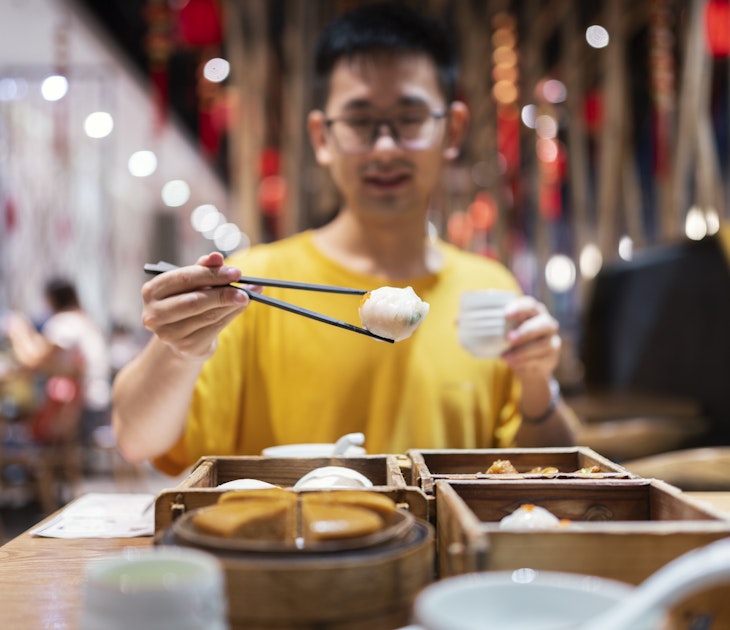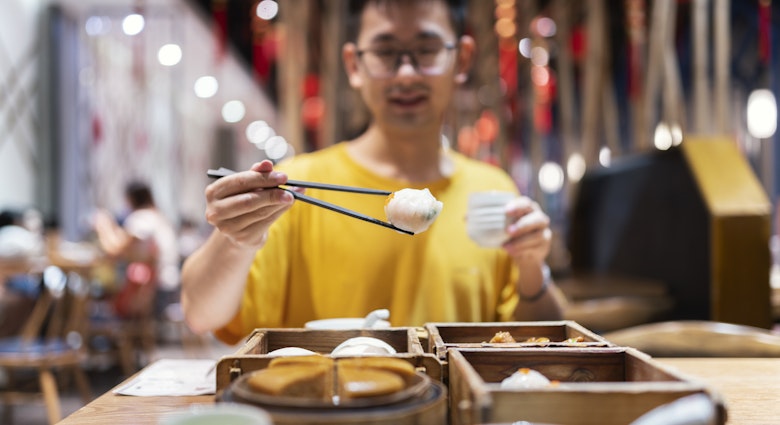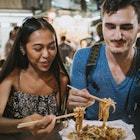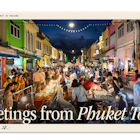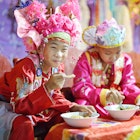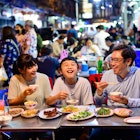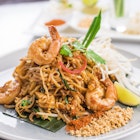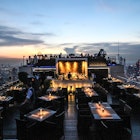Bangkok is a city of temples and eat streets scattered across many neighbourhoods, each with its own personality. However, you haven’t fully experienced the City of Angels until you’ve taken a cue from Bruce Lee and entered the dragon.
The dragon, in this case, is Thanon Yaowarat, the main thoroughfare which threads through Bangkok’s Chinatown. Its head, say locals, is the Chinatown Gate at the road’s eastern end. The dragon’s body then stretches west until it ends with the tip of its tail dipping into the waters of the Rob Krung canal.
The neon signs and perpetual traffic of Bangkok's Chinatown. Image by Tim Richards
Be aware: this is not a sleepy dragon, dozing in its cave on top of a mound of treasure. Yaowarat Road is an active beast, exhibiting plenty of colour and movement. Lofty neon signs with Thai and Chinese scripts vie for visual prominence, while the roadway below is jammed with buses, vans, tuk-tuks and luminous pink taxis.
This district has been a centre of Chinese settlement since 1782, when King Rama I moved the Thai capital to the east bank of the Chao Phraya River. It was a neighbourhood defined by trade, its merchants selling goods imported from China. Although Bangkok’s 21st-century shopping malls have leeched away some of Chinatown’s custom, it’s still a popular shopping centre and food destination for both locals and visitors to Thailand.
Street food stalls tempt travellers on almost every street corner. Image by Tim Richards
Food stalls line Yaowarat’s footpaths, selling a variety of edible goods – tiny crabs piled in enormous metal bowls, fresh fruit decoratively arranged in small pyramids, mounds of cabbages and large canisters of beans.
There’s plenty to attract the attention here, but Chinatown’s greatest fascination lies in the network of narrow alleys which fan out from its main arteries. The first-time arrival should drop all planning instincts and just let go. Plunge into the narrow side streets and commercial alleyways and turn left, turn right, and see what you encounter as you go.
Alleys such as Trok Itsaranuphap host stalls selling foodstuffs, including dried or preserved foods in colourful profusion. A tea stall, for example, might be stacked with large transparent containers of green tea, jasmine tea, rose tea, oolong and unfamiliar varieties such as pu’er, a post-fermented tea from China’s Yunnan province which is believed to grant health benefits.
Green tea, jasmine tea, rose tea, oolong and more at a Chinatown stall. Image by Tim Richards
Other stalls sell such diverse items as gingko nuts, chestnuts, dried ginger, whole barbecued piglets, chicken feet and plastic bags full of crunchy dried frog skins. There are also plenty of homewares on offer, especially along narrow Sampeng Lane.
At the north end of the claustrophobic Soi 16 off Thanon Charoen Krung and the nearby Talat Mai market, stalls sell paper replicas of worldly goods (including smartphones) to burn as an offering to ancestors. This ceremonial act is often carried out at Wat Mangkon Kamalawat, an impressive temple with Buddhist, Taoist and Confucian shrines.
Chinatown is also replete with food stalls and restaurants. One of the longest-running of these, Nay Mong, has been in business for six decades. It specialises in oyster omelettes, cooked in view of passers-by in a large pan at the front window. The result is a springy omelette made from tapioca flour and eggs, studded with oysters and spring onions. Splashed lightly with chilli sauce, it’s filling and delicious.
If you fancy fish, the Chinese-Thai restaurant Tang Jai Yuu will grill it fresh, and Chiang Kii is well known for its rice soup with fish. Other worthwhile eateries include Jek Pui for its Chinese-style Thai curries, and Hua Seng Hong for its broad Chinese menu.
A motorcyclist takes a spin around the alleys of Chinatown. Image by Tim Richards
Given the crowded blur of eating and shopping that Chinatown presents, it’s easy to overlook the fact it has quiet corners, places where you can take a moment to draw a breath and observe life in its more unhurried moments. Off the commercial side streets are various troks (alleys) crammed with tiny two-level timber homes, some centuries old.
In the south of the district – the belly of the dragon, perhaps – riverside Thanon Song Wat is lined with decorative century-old warehouses, many still in use. Off this road east of Thanon Yaowa Phanit is another contemplative spot – a garden and cemetery behind the Luang Kocha Itsahak Mosque, originally established by Muslim traders. It’s a beautiful, cool space, the simple headstones shaded by the boughs of tropical trees. There couldn’t be a better example of the peaceful flipside to Chinatown’s bustle.
Chow down in Chinatown or sashay around a royal palace - Lonely Planet's Thailand guide book shows you how.






